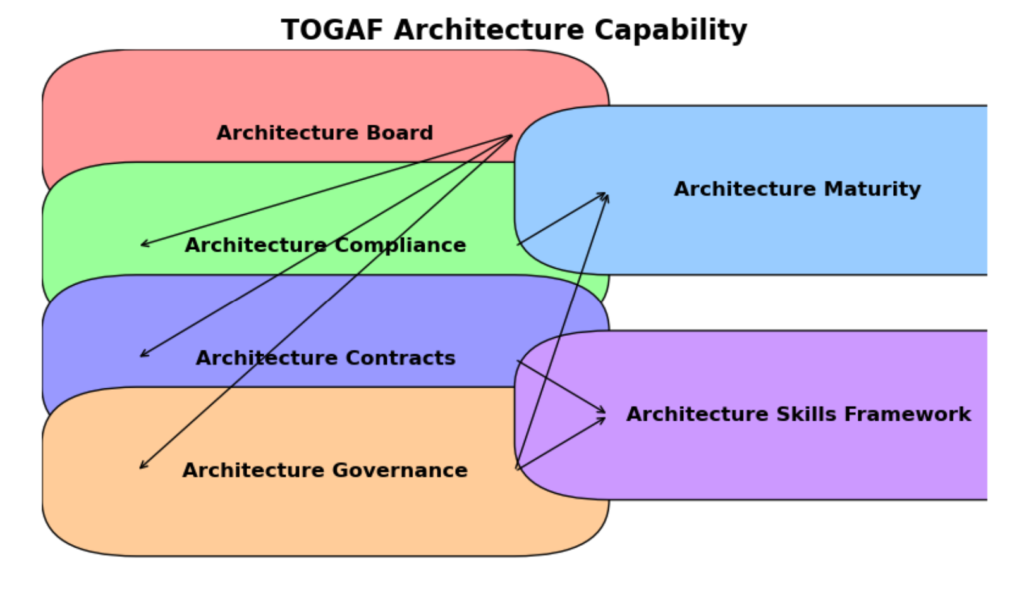Architecture Capability
In TOGAF, Architecture Capability refers to the organization’s ability to develop, maintain, and govern enterprise architecture effectively. It is not just about tools or frameworks—it’s about people, processes, governance, and maturity.
Architecture Capability ensures that enterprise architecture delivers real business value and aligns with strategic goals.
🧱 Key Components of Architecture Capability
TOGAF defines several core elements that together form the Architecture Capability:
- Architecture Board
A governing body that oversees architecture decisions, compliance, and strategic alignment. - Architecture Compliance
Ensures that projects and solutions conform to the defined architecture standards and principles. - Architecture Contracts
Formal agreements between development partners and architecture teams to ensure alignment. - Architecture Governance
The framework and processes for managing architecture activities and ensuring accountability. - Architecture Maturity
A measure of how well architecture practices are embedded and optimized within the organization. - Architecture Skills Framework
A model for assessing and developing the skills of architecture practitioners.
🖼️ Visual Diagram
Here’s a visual representation of the TOGAF Architecture Capability and its components:

🌍 Real-World Examples
1. Insurance Company – Regulatory Compliance
Scenario:
An insurance firm must comply with new data protection regulations across multiple regions.
Architecture Capability in Action:
- Architecture Board defines compliance strategy.
- Architecture Compliance ensures all systems meet regulatory standards.
- Architecture Contracts formalize responsibilities with vendors.
Outcome:
Faster compliance with reduced risk and improved audit readiness.
2. Retail Enterprise – Cloud Migration
Scenario:
A global retailer is migrating its legacy systems to the cloud.
Architecture Capability in Action:
- Architecture Governance ensures consistent cloud adoption practices.
- Architecture Maturity assessment identifies gaps in cloud readiness.
- Architecture Skills Framework guides upskilling of IT teams.
Outcome:
Smooth migration with minimal disruption and improved agility.
3. Government Agency – Smart Infrastructure
Scenario:
A city government is implementing smart infrastructure for traffic and utilities.
Architecture Capability in Action:
- Architecture Board aligns initiatives with city strategy.
- Architecture Contracts manage collaboration with tech vendors.
- Architecture Compliance ensures interoperability and security.
Outcome:
Efficient rollout of smart services with strong governance and public trust.
🧩 Conclusion
Architecture Capability is the foundation of successful enterprise architecture. By investing in governance, skills, and maturity, organizations can ensure that architecture is not just a theoretical exercise—but a strategic enabler of transformation.